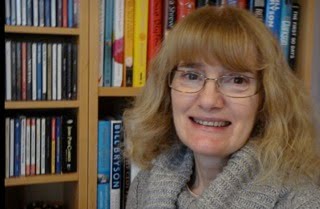 |
| Gipsy Moth is set in 1930s Devon. |
I've always loved Devon and was amazed when I first went there in my teens to see the countryside - the rolling hills - rolling right down to the sea! This was after spending several holidays in comparatively flat East Anglia, or the metropolis of Brighton and Hove.
I had also adored Gentian Hill by Elizabeth Goudge, set in Torbay during the days of Nelson. However, for my novel, I choose the 1930s because Devon was a favourite holiday destination for my family between the Wars.
I had also adored Gentian Hill by Elizabeth Goudge, set in Torbay during the days of Nelson. However, for my novel, I choose the 1930s because Devon was a favourite holiday destination for my family between the Wars.
 |
| This view of Teignmouth has hardly changed in eighty years. |
I thought I'd tell you how I wrote my novel. I started with the first 1,000 words, and decided to do some research before I went any further. So I travelled to Devon and revisited the area as well as doing some research in the public library in Exeter. Then happily, I set off and wrote forty chapters. I was very proud of my work and asked a local reading group to access it. Ouch! Their comments really hurt! I also had a report done by Cornerstones, and although honest, it was helpful and I realised that I had a lot of work to do. The trouble was that I couldn't bring myself to get on with it for several months until I went to one of their workshops run by Helen Corner and Lee Weatherly where I met lots of lovely people, including Ava (Aiveen) McCarthy, and was finally kicked into action. I even got a letter published in Writing Magazine about it to show how determined I was! However, despite lots of submissions to agents, I still wasn't published, although Robert Hale showed some interest, they thought it wasn't for them. So last year I joined the Romantic Novelists' Association's New Writers' Scheme. I had a wonderful feedback, which although wasn't quite what I wanted to hear, showed me where I'd gone wrong. So now, I hope at last that I've got it right!
 |
| The Gipsy Moth pub in Greenwich. |
The Gipsy Moth pub got it's name because Gipsy Moth IV, the boat that Sir Francis Chichester sailed around the world in in 1967, was on display here for several years before being restored and circumnavigating the world again in 2005.
What is the link between Sir Francis and the Gipsy Moth aeroplane? Well, he flew solo to Australia in one in January 1930, and named his boats after his iconic little bi-plane.
You can find the Gipsy Moth that Amy Johnson flew to Australia in May 1930, in the Science Museum in London where it was brought after her epic journey. She actually sailed home by boat, probably having had enough adventures for a while, after spending a night in the desert, flying over shark infested seas and through jagged mountains in low cloud!
Amy Johnson represented the exciting future for women glimmering on the horizon now that they had at last won the vote in 1928. Electrical home gadgets made housework easier, and the first birth control clinics gave women more freedom. Though they didn't help Kathy in my novel! And it was now acceptable for single women run businesses like my fictional character, Sylvia Trevelyan.
Enduring female authors from that time are Agatha Christie, Margaret Mead, and Virginia Woolf whose books were borrowed by working girls from subscription libraries like those at Boots.
 |
| You can watch the Gipsy Moth video by clicking here. |

